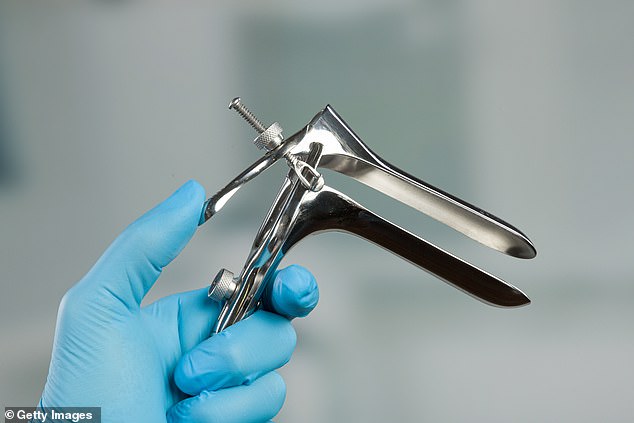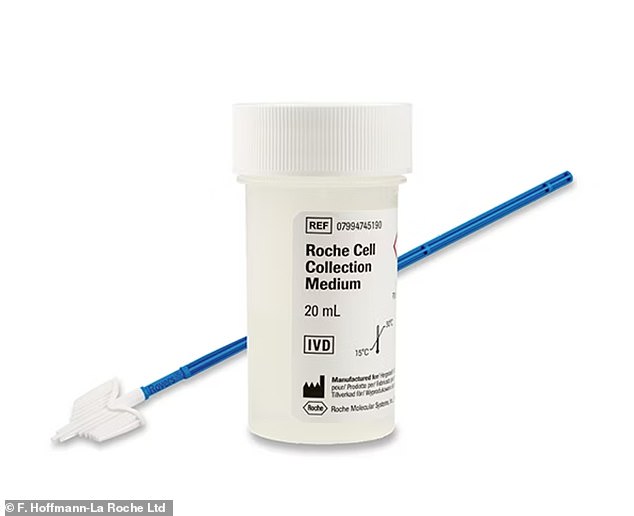Starting this fall, women will have access to a simple swab test to detect cervical cancer, marking a major upgrade in women’s health care.
Cervical cancer screening, known as a Pap test, can be so uncomfortable that women avoid going to the doctor for it.
Around eight million women who should be screened for cancer have not gone to the doctor in the past five years.
Delayed care means more women are unknowingly carrying the human papillomavirus (HPV), the main cause of cervical cancer. And the later a diagnosis is made, the harder it is to treat the cancer.
The current in-office procedure involves a device called a speculum, a cold, duckbill-shaped metal device that is inserted into the vagina and widens it to allow the doctor to take a sample of cells from the cervix.
In addition to being physically uncomfortable, it can be emotionally distressing, especially for people who have experienced sexual abuse.
But a new model for cervical cancer screening has arrived that allows women to do without the speculum altogether.
Roche’s newly approved HPV test allows women to test themselves instead of lying down with their legs in stirrups. The sample is sent to a lab that tests for HPV, the cause of 95 percent of all cervical cancer cases.
In May, the FDA approved two self-sampling tools for cervical cancer screening from pharmaceutical companies Roche and Becton, Dickinson and Company.
The tests are performed in a doctor’s office like a traditional Pap test, but instead of lying down with your legs in stirrups while the doctor performs the uncomfortable procedure, the new tests allow women to go into a room, swab their vaginal canals themselves and leave a sample with the doctor, similar to leaving a urine sample.
In traditional Pap tests, your doctor takes a swab of your cervix and deposits the sample on a slide and sends it to a cytopathologist, a laboratory professional specially trained to examine cells under a microscope.
The main purpose of a Pap test is to identify abnormal cells in the cervix that may indicate cervical cancer or precancerous conditions.
The newly approved self-collections are sent to labs that can now analyze samples from the vaginal walls rather than the cervix.
The lab tests the sample for HPV strains that are most likely to cause cervical cancer.
Dr. Karen E. Knudsen, CEO of the American Cancer Society, saying‘Almost all cervical cancers are caused by persistent infection with certain types of HPV.
‘Self-sampling can expand access to screening and reduce barriers, giving more people the opportunity to detect, treat and ultimately survive cancer.’
The lab transmits those results to the doctor who ordered the test, and the doctor meets with the patient to discuss them.
By detecting a possible HPV, the doctor can determine if the patient is at risk of developing cervical cancer through precancer risk testing.
Dr. Shieva Ghofrany, OB-GYN and Fellow of the American Congress of Obstetricians and Gynecologists, saying‘The integration of self-sampling with individualized HPV strain testing represents a significant advance in cervical cancer detection.
‘Self-sampling provides greater access to testing and (the Becton, Dickinson and Company test) allows health care providers to determine the specific HPV strains present in samples and more accurately identify and treat high-risk individuals and avoid unnecessary treatment for low-risk women.’

The speculum is a cold, duck-billed metal device that is inserted into the vagina and widens it to allow the doctor to take a sample of cells from the cervix.
But a growing wave of women are speaking out against the deeply ingrained notion that women’s health care involves pain and must be accepted.
By detecting possible HPV, the doctor can then determine if the patient is at risk of developing cervical cancer by testing to detect precancerous changes in cervical cells.
The researchers hope to take their innovation a step further and introduce at-home testing that would eliminate the need for a potentially uncomfortable and painful doctor’s appointment.
It would work the same way as colorectal cancer screening kits: A woman would take a sample from her vaginal canal, package it and mail it to a lab, which would test for HPV. If the test comes back positive, the woman and her doctor can talk about next steps.
The Pap test has remained relatively unchanged since its inception in the 1940s. It was a revolutionary medical advance that helped reduce cervical cancer rates by 70 percent from the days before screening.
But a growing wave of women are speaking out against the deeply ingrained notion that women’s health care involves pain and must be accepted.
The dreaded IUD, a notoriously painful birth control method, is in the midst of a makeover.
Experts at Swiss technology company Aspivix have invented an alternative method that uses suction to manipulate the cervix, reducing pain by three-quarters according to a study.
The symptoms of menopause are also receiving due attention, and several specific medications for this disease are being developed.
Last year, the FDA approved the first drug specifically to treat hot flashes caused by menopause. About 80 percent of menopausal women experience hot flashes.


